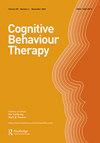基于网络和面对面的认知行为治疗中治疗非开始、退出和减少的绝对和相对比率:随机对照试验的荟萃分析
IF 3.2
2区 心理学
Q1 PSYCHOLOGY, CLINICAL
引用次数: 0
摘要
基于互联网的认知行为疗法(ICBT)似乎产生了与面对面CBT相当的临床效果。然而,这两种CBT模式是否同样被患者接受尚不清楚。我们进行了一项荟萃分析,检查ICBT和面对面CBT的治疗非开始、退出和减员的绝对和相对比率。30个比较ICBT和面对面CBT治疗精神和躯体疾病的试验被纳入。计算合并事件率以估计治疗不开始、退出和减员的绝对发生率。计算风险比(RR)以比较不同治疗方式的相对发生率。ICBT非开始治疗的绝对比率为8.7% (95% CI = 5.0-14.5),而面对面CBT的绝对比率为11.9% (95% CI = 8.3-16.8),显著RR为0.58。在各种敏感性分析中,这种效应仍然显著。ICBT的绝对放弃率为16.3% (95% CI = 11.8-22.2),面对面CBT的绝对放弃率为12.0% (95% CI = 7.6-18.5),而ICBT的绝对放弃率和随访损失率分别为15.2% (95% CI = 11.1-20.4)和22.3% (95% CI = 16.9-28.8),面对面CBT的绝对放弃率分别为14.1% (95% CI = 10.3-19.0)和23.1% (95% CI = 17.5-29.7)。这些rr均不显著。研究结果表明,虽然ICBT比面对面CBT更容易启动,但两种方式在不同临床背景下的治疗完成率和研究保持率相当。本文章由计算机程序翻译,如有差异,请以英文原文为准。
Absolute and relative rates of treatment non-initiation, dropout, and attrition in internet-based and face-to-face cognitive-behavioral therapy: a meta-analysis of randomized controlled trials
Internet-based cognitive-behavioral therapy (ICBT) appears to produce comparable clinical benefits to face-to-face CBT. However, whether these two CBT modalities are equally accepted by patients remains unclear. We conducted a meta-analysis examining absolute and relative rates of treatment non-initiation, dropout, and attrition in ICBT and face-to-face CBT. Thirty trials comparing ICBT to face-to-face CBT for psychiatric and somatic disorders were included. Pooled event rates were calculated to estimate absolute rates of treatment non-initiation, dropout, and attrition. Risk ratios (RR) were computed to compare relative rates between modalities. Absolute rates of treatment non-initiation for ICBT were 8.7% (95% CI = 5.0-14.5) compared to 11.9% for face-to-face CBT (95% CI = 8.3-16.8), which produced a significant RR of 0.58. This effect remained significant in various sensitivity analyses. Absolute rates of treatment dropout were 16.3% (95% CI = 11.8-22.2) for ICBT and 12.0% (95% CI = 7.6-18.5) for face-to-face CBT, while absolute rates of post-treatment and follow-up attrition were 15.2% (95% CI = 11.1-20.4) and 22.3% (95% CI = 16.9-28.8) for ICBT and 14.1% (95% CI = 10.3-19.0) and 23.1% (95% CI = 17.5-29.7) for face-to-face CBT, respectively. These RRs were non-significant. Findings suggest that while ICBT is more readily initiated than face-to-face CBT, both modalities demonstrate comparable rates of treatment completion and study retention across diverse clinical contexts.
求助全文
通过发布文献求助,成功后即可免费获取论文全文。
去求助
来源期刊

Cognitive Behaviour Therapy
PSYCHOLOGY, CLINICAL-
CiteScore
9.20
自引率
0.00%
发文量
25
期刊介绍:
Cognitive Behaviour Therapy is a peer reviewed, multidisciplinary journal devoted to the application of behavioural and cognitive sciences to clinical psychology and psychotherapy. The journal publishes state-of-the-art scientific articles within: - clinical and health psychology - psychopathology - behavioural medicine - assessment - treatment - theoretical issues pertinent to behavioural, cognitive and combined cognitive behavioural therapies With the number of high quality contributions increasing, the journal has been able to maintain a rapid publication schedule, providing readers with the latest research in the field.
 求助内容:
求助内容: 应助结果提醒方式:
应助结果提醒方式:


